As the kids head back to school and the UK welcomes the return of grey skies, it’s the perfect moment for a trip to Provence for the 2024 harvest at Château Sainte Marguerite. Spanning 558 hectares of Cru Classé vineyards, it’s the largest producer in Provence.
After a quick flight and a scenic drive, we arrived in Hyères, a charming village about 100 kilometres west of Nice. Palm trees swayed in the warm sun, and the village was serene, surrounded by the simplicity of nature and the salty Mediterranean breeze.

Dining in Provence
One of the estate's owners, Olivier Fayard, lives nearby. Following his recommendation, we dined at Restaurant l’Estagnol, a quiet standout, nestled in a forest of Maritime pines. The restaurant exuded rustic charm, with the aroma of barbecued seafood filling the air. Beyond a discreet curtain, a stunning Mediterranean bay came into view, bathed in a golden sunset.

A kind stranger offered us a glass of Cuvee Marguerites Rosé 2023 rosé, so pale it glowed golden in the sunset. This moment captured the essence of Provence: refinement, nature, and simple pleasures. The rosé’s intense silkiness was reminiscent of the sand underfoot on the beach.
Dinner began with freshly cooked lobster, pairing seamlessly with Marguerite full of citrus and summer fruits. The wine’s crisp acidity cut through the lobster’s richness, enhancing its delicate flavours.
Next came the Bouillabaisse, a traditional Provençal fish stew, accompanied by Collection Marguerites Blanc 2022 aged for 18 months in French oak. The wine’s high acidity, smokiness and minerality beautifully balanced the rustic, hearty fish soup cooked on wood stoves. The clean, linearity of flavours reminded me of a fine dining sushi-and-koshu pairing I once had in Kensington.
The harvest: tradition meets innovation
The following morning, we arrived at the vineyards of La Londe-les-Maures just before sunrise. The estate covers well over 500 hectares across varied terrain, with a mix of AOC and IGP classifications. The vineyard sites experience unique and varied microclimates due to their proximity to the bay and varying soil compositions, adding complexity to the wines.
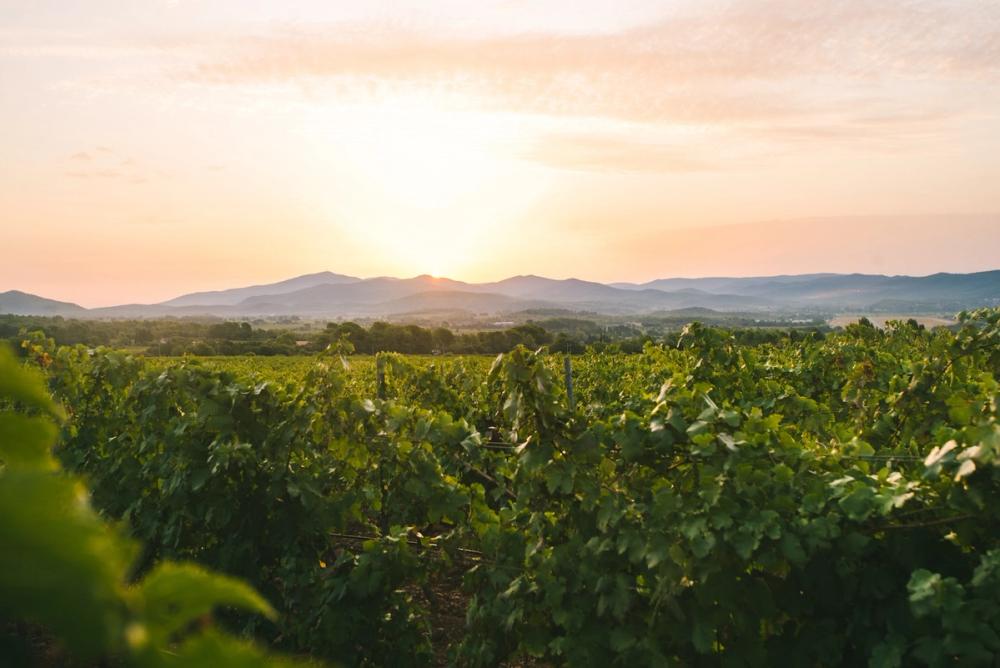
For instance, clay-rich areas retain water better, providing resilience during dry spells, while less clay requires careful water management. La Londe’s mica schist soil, known for excellent water retention, creates a unique environment for grape varieties like Grenache and Rolle (Vermentino).
The cooling breeze from the Mediterranean Sea moderates temperatures, allowing grapes to mature gradually with ideal acidity levels and contributing to the wines' distinctive minerality.
Winemaking precision
Harvesting begins each year with Grenache from the Saint-Pons site, a 15-hectare plot. The estate’s approach is deeply traditional, with meticulous care to maintain vine health and vigour. Each year, eight branches are left at the vine’s base, maximising the plant's power for future vintages while aiding machine harvesting.
An interesting aspect of vineyard management is the internal competition among the estate’s viticulturists, each managing 20-25 hectares. This hands-on approach fosters a friendly rivalry to produce the best grapes for the estate’s top wines.
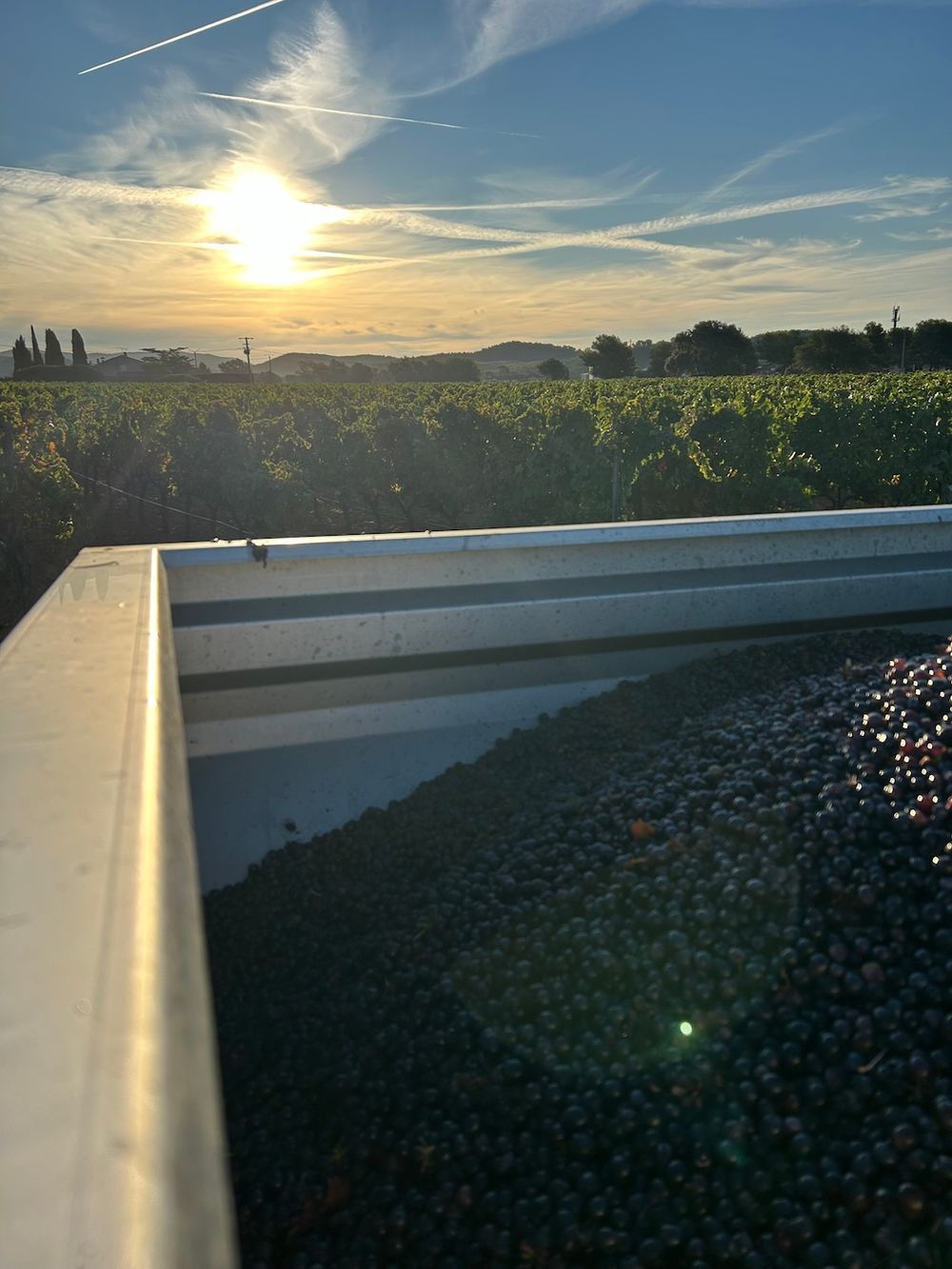
Once picked, the grapes are transported to the winery, just five minutes away, to minimise oxidation and preserve freshness. The estate uses cutting-edge cooling technology to chill the grapes to 14-15°C, ensuring controlled maceration and preserving delicate flavours. The grapes are then gently pressed using the Willmes press, which minimises skin breakage and preserves delicate flavours. The first low-pressure juice (saignée) is praised for its finesse, while the first press juice, more intense and higher in alcohol, is suitable for ageing.
Crafting wines of complexity
Fermentation begins quickly, with Grenache and Rolle from the August 27 harvest already showing complexity. The Rolle, aged in new barrels for eight months, develops characteristic grapefruit and umami flavours, resulting in a beautifully balanced wine with vibrant acidity and a silky texture.
Château Sainte Marguerite remains the only estate in Provence producing Vermentino as a single varietal white wine. Its oak ageing and fermentation result in a wine as complex as it is refreshing.
We tasted various cask samples, noting that wines with an initial alcohol level of 9 degrees would eventually rise to 13 as the remaining sugar is consumed. The temperature-controlled fermentation preserves the delicate aromatics typical of the estate.
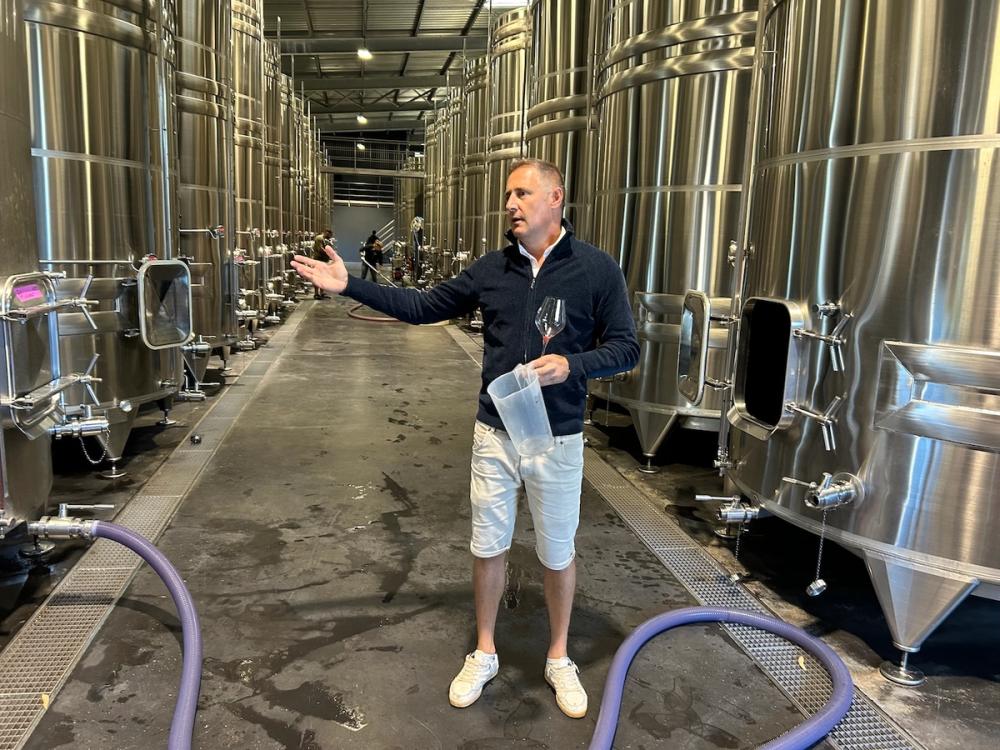
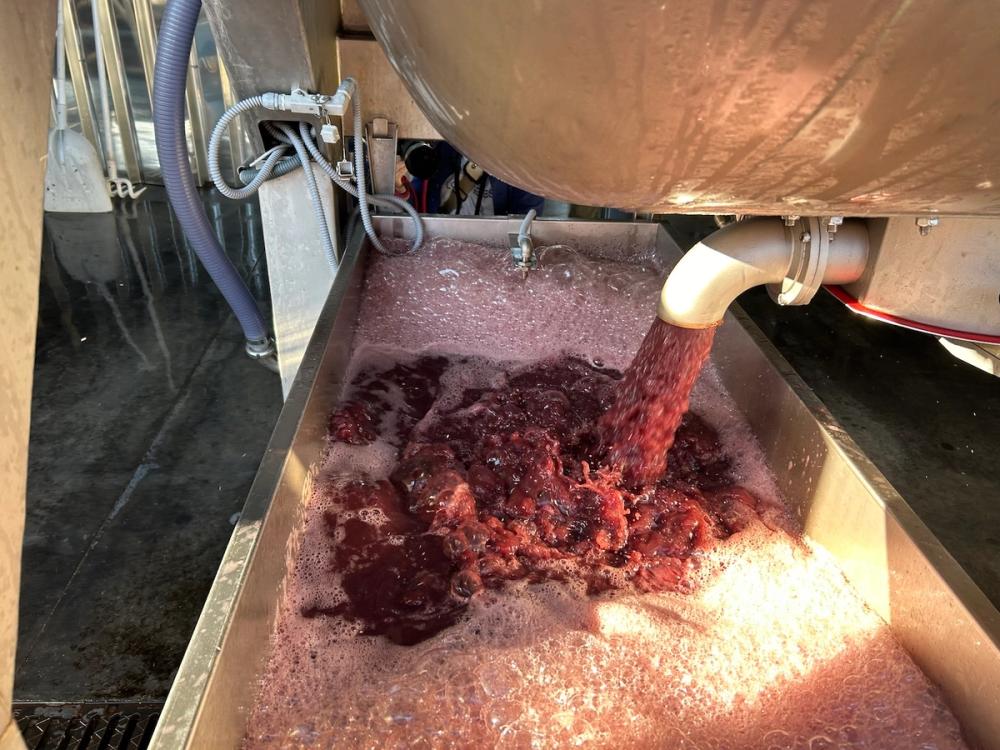
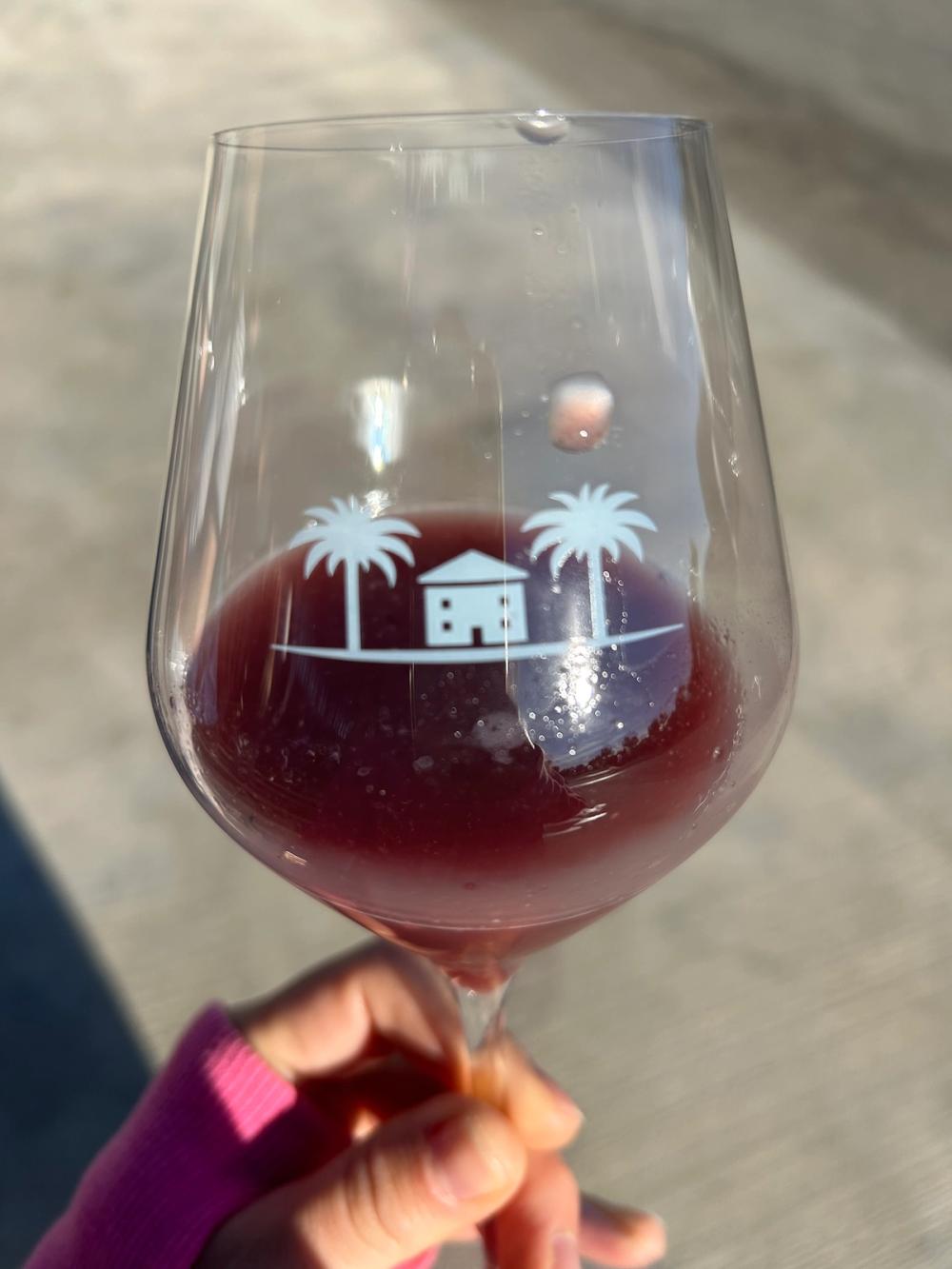
Precision in blending
Rosé may seem simple, but achieving the right colour and flavour profile requires considerable skill. Fayard explained that each grape's characteristics are carefully balanced – Grenache provides structure, while Rolle adds a vibrant aromatic lift.
The fermentation process is even and methodical, with temperature adjustments ensuring optimal conditions for yeast and grape development. The winery’s choice of yeast strains, avoiding indigenous yeasts, ensures consistent fermentation and wine quality.
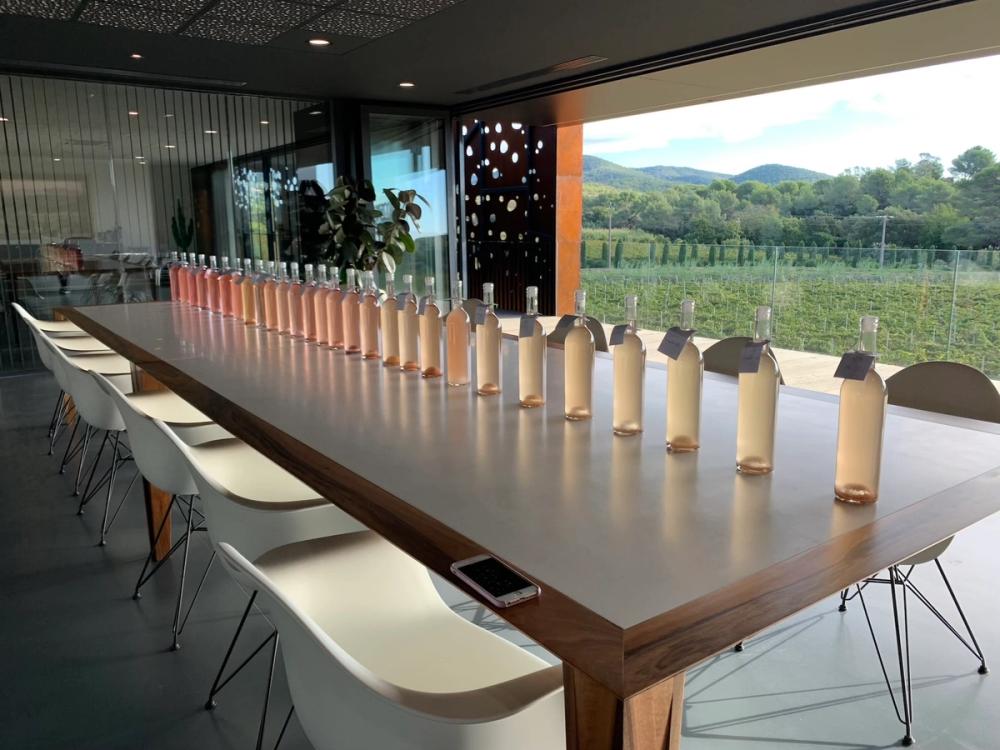
Olivier and his brother led the first blending of Collection Sainte Marguerite three years ago (pictured above), carefully balancing fruit and acidity - and colour. The blend reflects the Fayard family’s vision of producing an elegant, versatile rosé with characteristics similar to a high-quality white wine, perfect for pairing with diverse dishes.
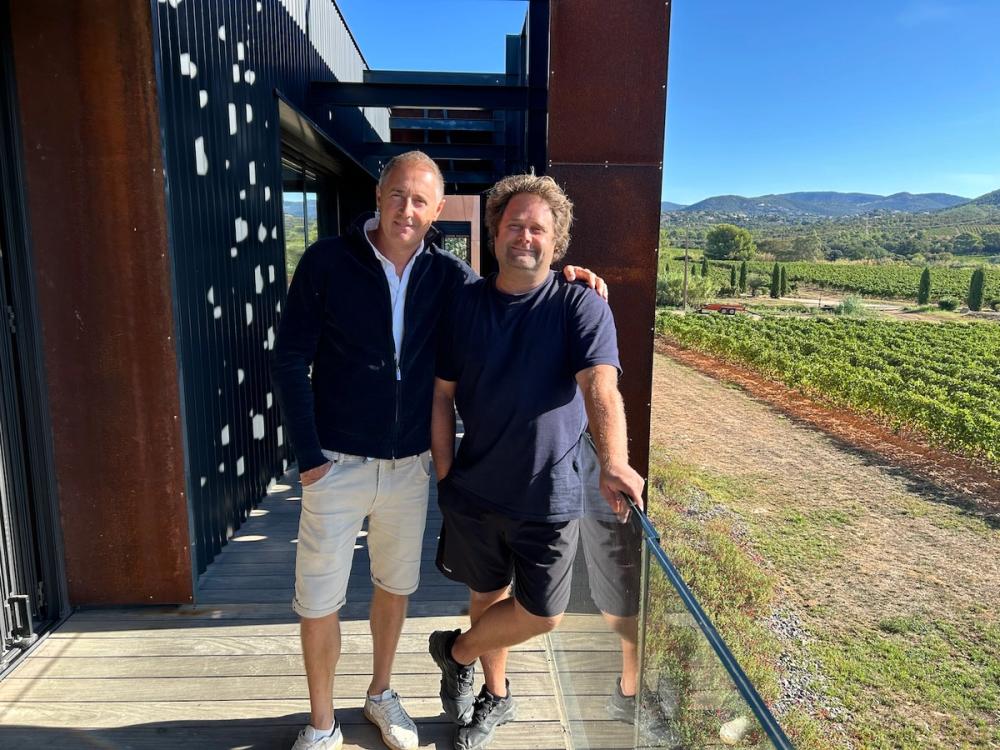
Olivier and Enzo Fayard – winemaking brothers of Chateau Sainte Marguerite
Sensory pairing: taste and texture
Following our winery visit, we engaged in a fun and creative sensory experiment exploring the intersection of taste, scent, and texture. We sampled scent oils that mirrored the aromas in the wines and tactile textures like silk and wool, corresponding to the wine’s mouthfeel.

Symphonie 2023 Grenache with 2% Rolle, exudes bright peach and grapefruit notes with a silky texture – therefore we had oils of grapefruit and peach, tasted the wine, then touched silk – all prepared immaculately by the winery team.
Fantastique Rosé 2023 combines 10% Rolle with Grenache, offering a complex profile of jasmine, pear, and peach jam, with a wool-like mouthfeel. Hence the jasmine and pear oils followed by a spoon of peach jam, tasting the wine and touching the wool replicated this tasting journey.
Marguerites Rosé 2023, primarily Grenache complemented by Rolle, featured vibrant passion fruit and lemon flavours, with a texture akin to the softness of sand and silk. A unique and engaging experiment that connects tasters with the wines' sensory qualities.
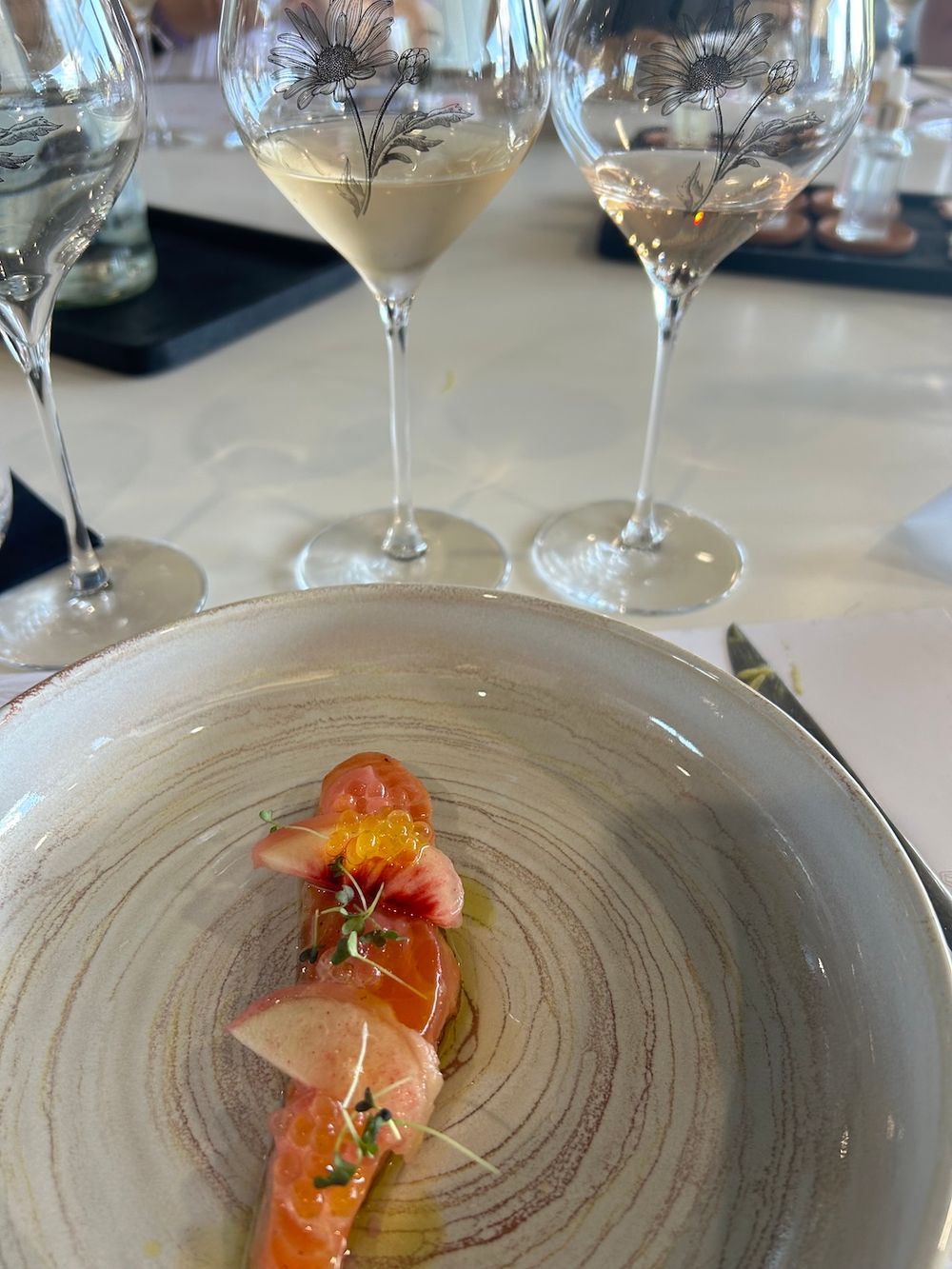
Culinary pairing: culinary art
Lunch on the second day was a masterclass in food and wine pairing. Chef Christophe Ribeyron showcased how lightly cooked scallops paired with Symphonie 2023 enhanced the wine's silkiness. Tangy grapefruit and creamy avocado enhanced the delicate scallops, mirroring the wine’s smooth, fruit-driven profile.
Next, salmon with lemon, peach, and jasmine complemented the citrus and floral notes of Fantastique Rosé 2023. Black cod, slow-cooked with rosemary, was served with an almond-garlic-citrus gazpacho, balancing perfectly with the wine's linear acidity.
Finally, Marguerites Rosé 2023 accompanied pigeon with samphire, caramelised pear, and rich carcass juice. The rosé’s vibrant fruit profile enhanced the dish, offering a sweet richness without residual sugar, and its balance of fruit and acidity proved versatile and carried us right through even the powerful and delicious, rich-savoury game flavours.
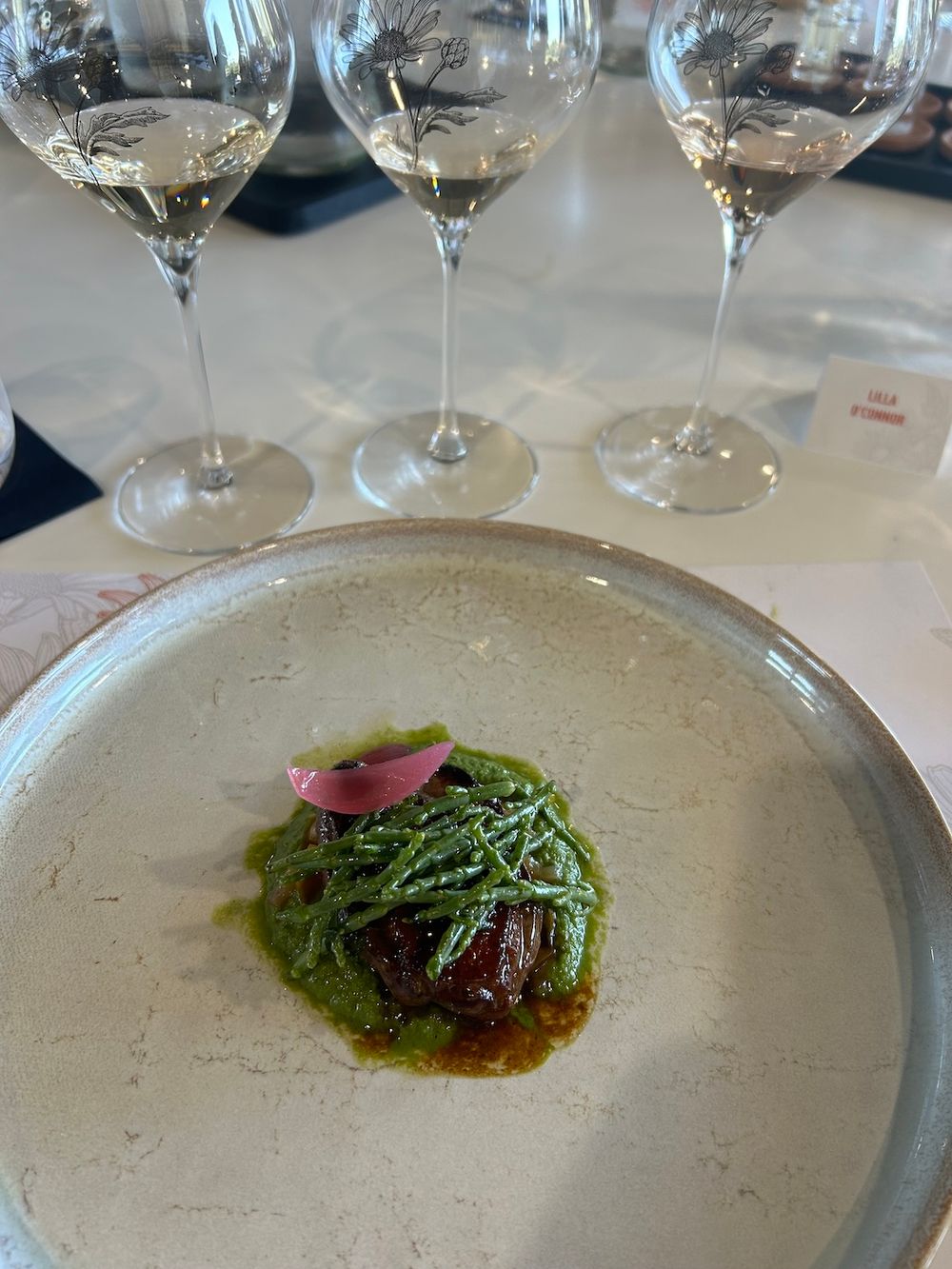
Fayard’s philosophy: balance and innovation
Olivier Fayard shared his excitement about the estate’s expansion. “This year is intense,” he remarked. “With 558 hectares now and new parcels, predicting yields and quality is a challenge. But our experience-based protocol helps maintain consistency.”
Fayard noted the adventure of adapting to new plots with different microclimates and terroirs. Château Sainte Marguerite’s commitment to precision winemaking, even amid rapid growth, reflects its core philosophy: balancing innovation with tradition.
The estate plans to develop white wines from specific vineyard sites, expanding beyond its renowned rosé offerings. The attention to detail from vineyard to bottle ensures Château Sainte Marguerite remains a key player in the luxury wine market.
For Château Sainte Marguerite, 2023 is a landmark year due to the record number of hectares under cultivation and its ongoing commitment to precision winemaking. "Scaling up is always a challenge," Fayard admits. "But we're ready. We know the land, and we've prepared for this."
Spring rains raised early concerns for mildew, but Fayard reflected, "The summer was near perfect." Despite the estate’s size, the attention to detail remains impeccable, promising that the 2023 vintage will embody the harmony of Provence’s nature with freshness, balance, and expressive fruit.
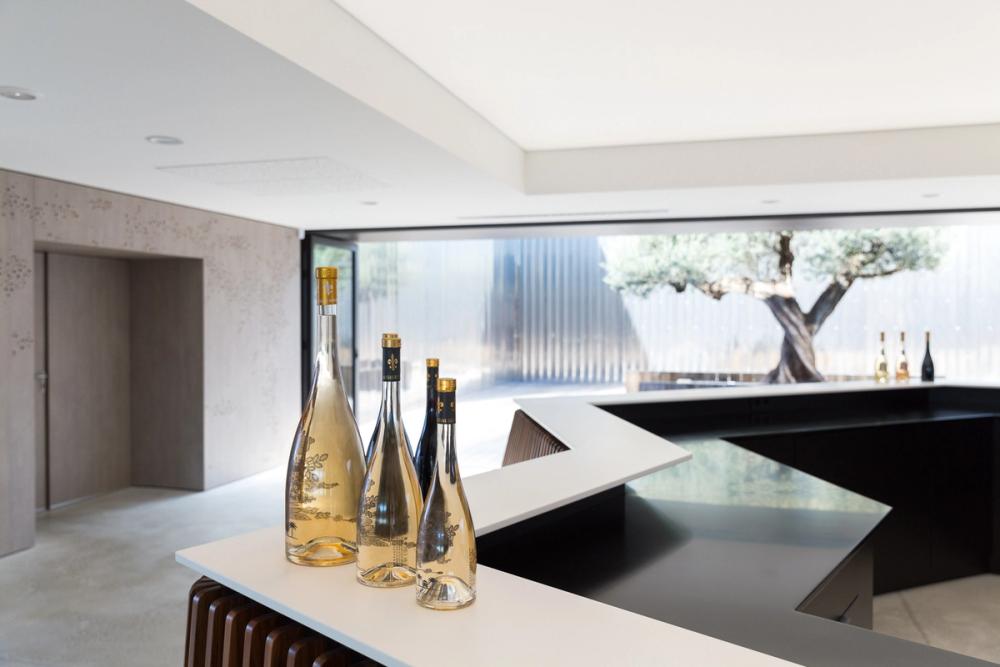
Serious fun
Olivier Fayard’s passion for Château Sainte Marguerite’s wines shines through. “It’s not complicated,” he insists. "You open the bottle, pour it, and you taste why we have this connection. It’s the wine you imagine drinking with friends by the beach, at a perfect moment.”
“Sainte Marguerite isn’t just a rosé – it’s something between white and rosé, uniquely its own. We constantly evolve our process, pushing boundaries with each vintage.” Fayard emphasises that balance and acidity create a dangerous allure: “You drink it, and before you know it, the bottle is gone.”
Fayard’s final message is clear: wine should be about pleasure and sharing. Whether it’s a casual beachside aperitif or an elegant gastronomic experience, the focus is always on enjoying the moment. “Our philosophy is serious, but also relaxed. It’s serious fun.”

































